After posting my article about the disco reference in Link’s Awakening, a reader by the name of Killer Bob asked a follow-up question that I’ve always meant to look into myself:
This is probably a stupid question… Mato, in both A Link to the Past and Link’s Awakening (both Japanese & English scripts) there’s something I haven’t seen that much of in other game scripts, at least not as frequently used as in these two titles, namely very often alot of ellipses … … … … … in that kind of fashion.
While I do understand the Japanese language use a more varied number of dots for their ellipsis, I earlier thought they either went with just two, three or a six dot variety?
I suspect these are probably used to convey speechlessness or often in the case of Zelda make a dramatic pause after the important info just told, rather than just an omission or trailing off into silence. I just don’t recall seeing it used this often as in these two titles.
Maybe it is more usual than I think. I’m a little confused if there’s a “correct” way or a “wrong” way to deal with it. Please explain this ellipsis madness to a newbie.
I’ve only really played through the English version of the game, but I do remember getting the feeling that there were a lot of ellipses in the game. Japanese entertainment often uses ellipses way more than in English, so I was curious to see how the original script handled them.
First, in my own many years of experience, it doesn’t seem like there is a set rule for ellipsis use in Japanese – everyone just does their own thing, it feels like. Actually, the Japanese versions are called “leaders”, since they’re not quite the same as ellipses. Looking online, it seems there might be some standard usage styles for formal writing (as covered here, for example), but in reality I rarely ever see them used in a standard, consistent way.
For example, right off the bat in the Japanese version of Link’s Awakening, we see a five-dot ellipsis:
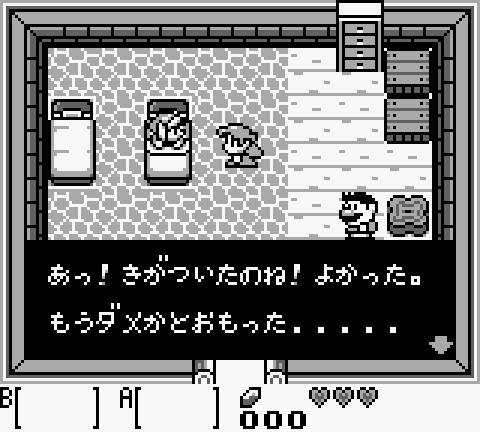 |
Shortly after, three-dot ellipses abound, as do two-dot ellipses:
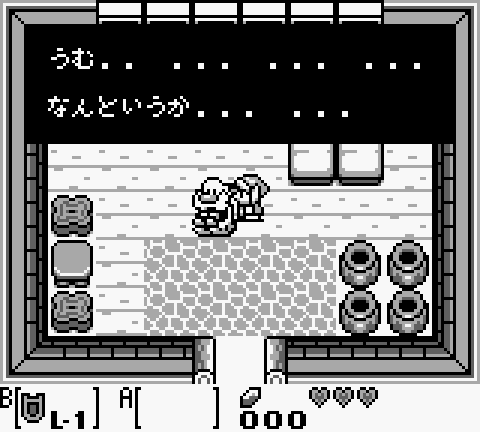 |
And there are even one-dot ellipses, if you can believe that!
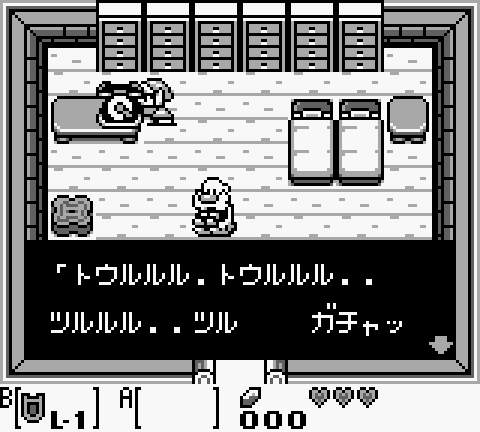 |
The single-dot ellipses are different from sentence-ending punctuation, which are hollow circles in Japanese. You can see one in the first screenshot above.
This game is actually kind of interesting – usually Japanese ellipses are their own font characters; they aren’t created using individual period-looking characters, at least in games and other digitial media. By that I mean rather than write out a Japanese two-dot ellipsis as “・・”, it’s more common to write it as “‥”.
Anyway, in comparison, the English translation almost always goes with the standard of three dots:
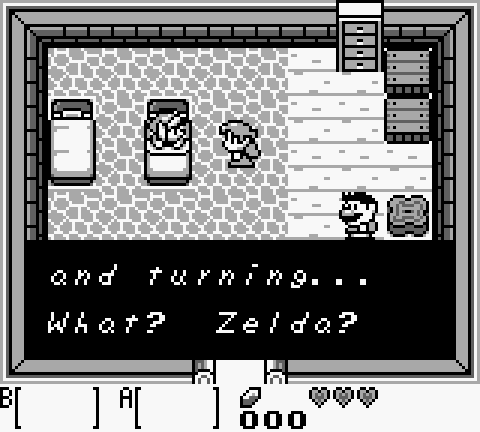 | 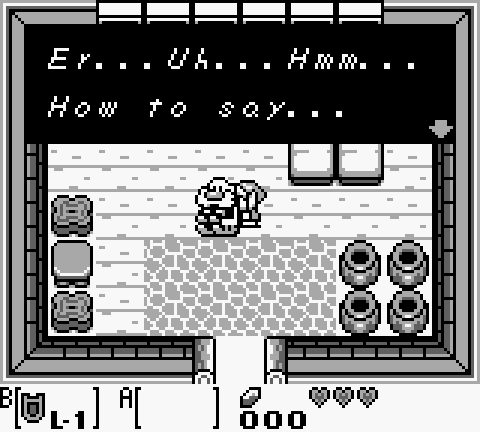 |
In translation, it’s extremely common to always just use three dots, regardless of how many dots are in the original Japanese text. Here’s a quick example from EarthBound:
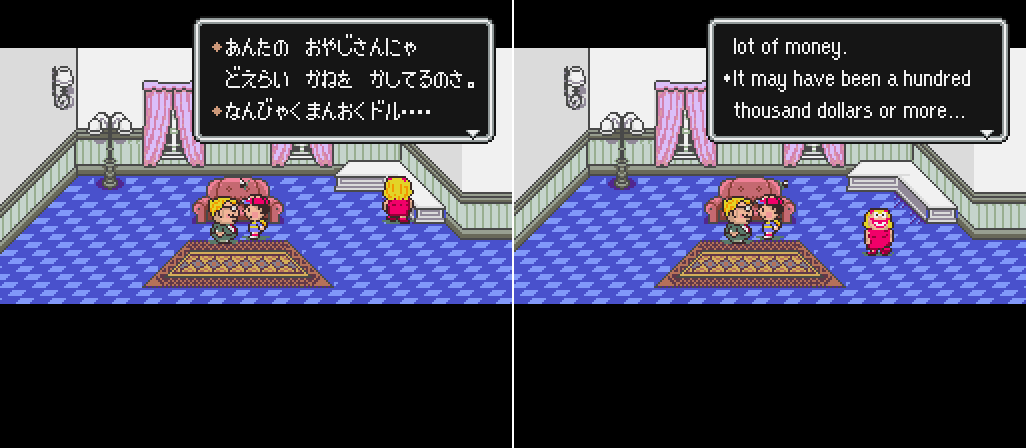 |
Ellipses are used so often in Japanese entertainment that some translators, editors, producers, or whoever often decide to cut a lot of them to make better-looking English. This has actually happened in my own professional experience – I can’t remember when exactly but I’ve been asked to user fewer ellipses in my own translations before. Sometimes doing so makes sense, although sometimes it can change the tone of a scene slightly.
Here’s an ellipsis being replaced with other punctuation in Final Fantasy IV, for example:
 |
It definitely seems like such a silly thing to focus on, but good translation is all about the details. As an experiment, I kind of almost want to change all the punctuation in a script and see how it changes or doesn’t change things. Maybe someday. Punctuation is a surprisingly pretty big deal sometimes – I seem to recall Hideo Kojima being very unhappy with how Metal Gear Solid’s original localization handled punctuation, for example, so a new translator was used for later games.
I think the difference in ellipsis usage probably stems from the fact that they’re used for slightly different things in each language. In formal English writing, they’re used for trailing off sentences or for incomplete sentences. In Japanese, you don’t even technically need punctuation, so ellipses are a bit of a newfangled thing. It seems like they’re generally more used for timing purposes or for what’s called a “pregnant pause”.
I do feel like English is well on its way to adopting that usage too, but I still recall showing some Japanese stuff I translated to my family and they were literally confused when sole ellipses would be used for comedic purposes.
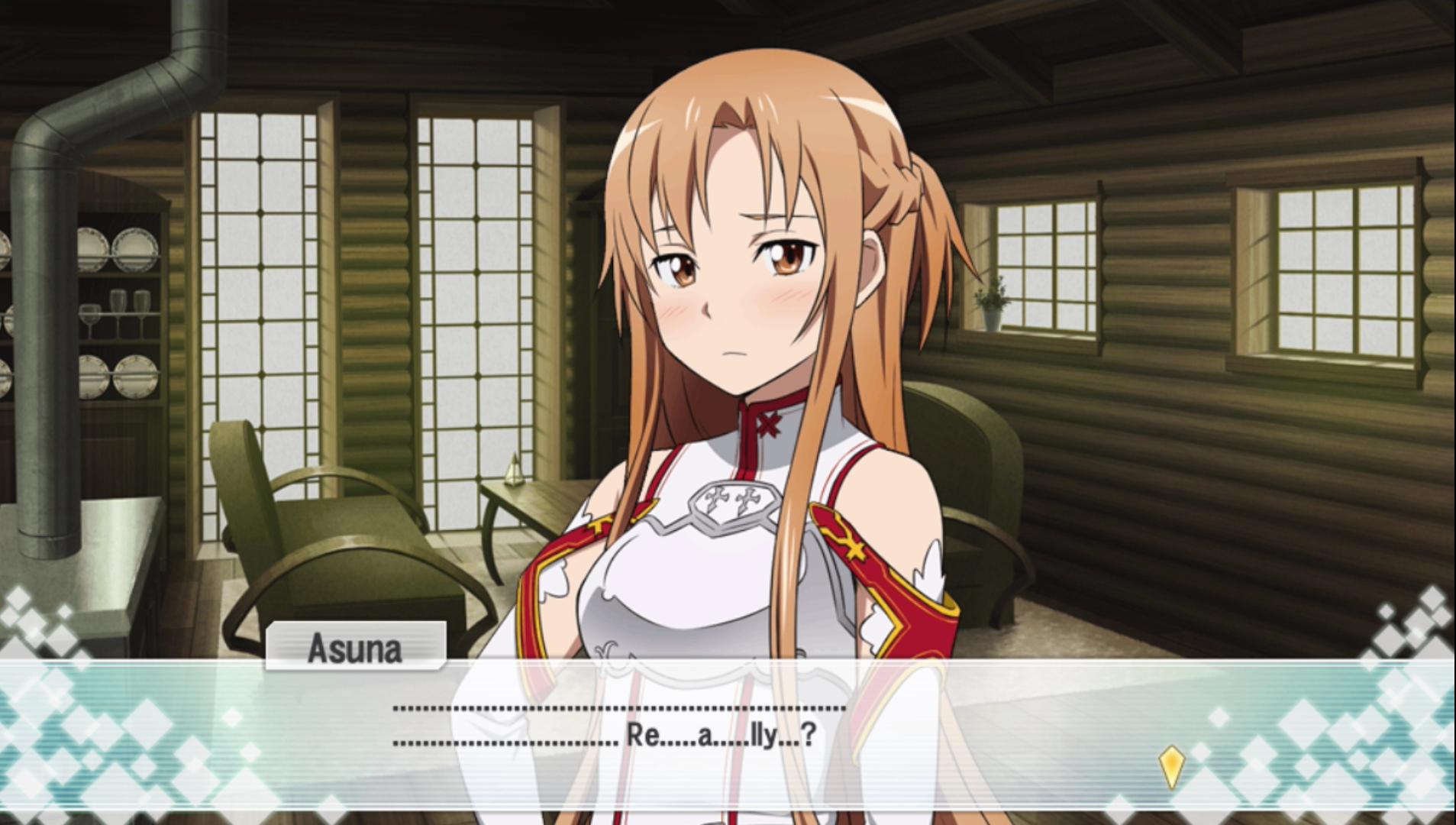
So why does it seem like this is more prevalent in Link’s Awakening? I’m not sure, maybe it was just the writer’s style, or maybe it’s actually pretty common in Zelda games from this time, but only gets retained in Link’s Awakening’s localization? I’ll have to keep an eye out for this when I play other Japanese Zelda games sometime.
Anyway, I’m certainly no expert in the history of Japanese and English punctuation, so consider the above info more as personal thoughts and experiences than hard, solid fact. Still, hopefully it helps answer the question somewhat!

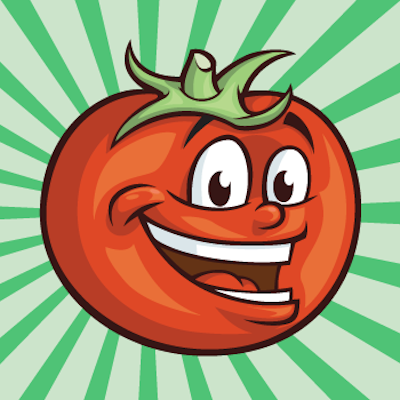
![Passport to MOTHER 2 [Learn Japanese!] Passport to MOTHER 2 [Learn Japanese!]](https://legendsoflocalization.com/wp-content/uploads/2018/05/pp-m2.jpg)
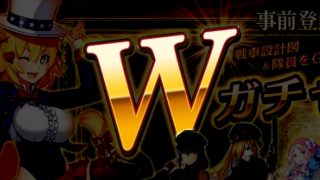

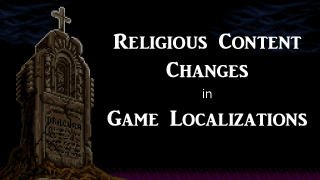
Kojima wasn’t mad at Jeremy Blaustein (the MGS1 translator) for his use of punctuation, he was mad because he “changed” things when in actuality he was just making things sound natural in English rather than an extremely literal translation like future MGS games would have. If you compare MGS1 PS1 with Twin Snakes you’ll notice a lot of lines that sounded fine in the PS1 version sound awful in the remake. One line that immediately jumps to mind was the Colonel saying “Ridiculous! You of all people should know he died in Zanzibar.” becoming “Ridiculous. You yourself… in Zanzibarland!”
The first one rewords the sentence in a way that makes sense in English without adding in any extra details to do so, whereas the second just takes the Japanese, translates it into English, and then doesn’t change anything about the structure or wording, giving us a completely awkward sentence that no native English speaker would ever say. Blaustein was fired because Kojima is a control freak, not because Blaustein did a bad job.
Perhaps worth noting that Hideo Kojima is an insane crazy man.
“Zanzibar” is a real-world island group off the African coast, and “Zanzibarland” is a fictional Asian country in the Metal Gear universe, so that original translation is outright wrong. I’d be annoyed too, if I was Kojima.
I’d be inclined to agree with you if we were talking about a translation done in 2013, but we’re not. Given that Metal Gear 2 was never released in North America, the audience for Metal Gear Solid (and also probably the translator himself) had never heard of the made-up place “Zanzibarland.” Yet it does have a suspiciously similar name to a real place, and the game does appear to be set in the real world; I mean, the action takes place in Alaska, and I’m pretty sure that’s a real place. I can look out my window and see it. So if I’m translating this game, and I come across the name “Zanzibarland,” I probably say “oh look, a typo” and just change it to what it really seems like it was supposed to be. Or if I’m playing this game and come across that name, I probably think “wow, what a lousy translation.”
Probably if Kojima is going to be so hung up on this name that he’s willing to fire his translator over it, he should consider sending said translator some kind of note saying maybe “while you’re translating my dialoguerrhea, keep an eye out for the word ‘Zanzibarland,’ which should be left just like it is.”
That’d be an argument if not for the fact that Metal Gear Solid has a section with text summaries of the two earlier games, translated by the same person, which includes lines like “Zanzibar Land was a democratic military regime that suddenly appeared in Central Asia in 1997.”
Not really clear that this data supports your position. In fact, if Blaustein were intentionally changing it just, like, to irritate his boss (or whatever reason), it seems that he’d have changed it every time it came up, right? But clearly he didn’t. And, in fact, the situation in which he got it right was one in which it appears in a large block of text with a ton of context.
If there’s one thing I’ve learned from reading this site, it’s that translators don’t have much time and aren’t presented with the text in an organised manner. Very very likely Blaustein saw the line “You yourself… in Zanzibarland!” entirely on its own, with no surrounding information to tell him that “Zanzibarland” is a real thing, and fixed what appeared to be a typo. Then, sometime later, he translated the long background synopsis, saw that “Zanzibarland” is clearly not a misspelled reference to Zanzibar, and so left it as-is. But since he didn’t have the luxury of a thousand revisions to his script, he never went back and noticed that he’d made a mistake earlier.
Yes, because Kojima is psychic and would know exactly what little details are going to get kurfuffled before hand to ward from them, or that they would be kerfuffled in a way that annoyed him
Maybe it’s because I haven’t played Twin Snakes, but “Ridiculous. You yourself… in Zanzibar!” still sounds weird.
Thanks for the extra info – I actually started to listen to a really big interview a while back but just realized I still have a lot left to go through.
I’d been distressed reading “Horry White” after having first seen through the two preceding Metal Gear games via the PlayStation 3 version of MGS3, where she’d been “Holly White”. Where, in this wide world, has “Horry” ever been a name…?
I noticed some translators do the opposite and have no ellipsis ever, even when ellipsis should be there in English. I understand the feeling, but that isn’t any better than having lots of them :p.
Poor handling of punctuation is a problem you see exceedingly frequently in visual novel translations that are a lot more dense with text and instead of sticking to a one sentence per text box convention, will frequently have multiple. There’s really no rhyme or reason to how punctuation (or vocalizations for that matter) is used that I’ve seen in Japanese, and you see a lot of beginning/poor translators lock themselves into using the existing punctuation as breakpoints in sentences and trying to translate each part individually then putting it back together in the same order, which is just silly and leads to a lot of really awkward and poorly phrased translations.
You should see Romanesque’s internal scripting too. “.” is used as an output delay command (ち.. 違う!… || カヤの魔力が.. まさか.ここまで大きく育っていたとは・・・..驚きだ) so periods are basically a wildcard for almost any other English punctuation. Or ignoring it.
Oh man, that sounds crazy. I really oughta check out more VNs than I usually do, it sounds like they’re finally starting to get some traction here and I’m always many years behind the latest Japanese stuff :X
I remember in my old days I used to think that every sentence in Japanese must be translated into one sentence in English, even super-long, crazy sentences. I think a big threshold moment for any translator is the moment they break free of that habit or thought. Rearranging text is too, although that’s trickier and might cause more controversy with less-understanding students of the language 😛
Thanks for this detailed explanation! Fashinating, had no idea “one-dot ellipsis” existed!! There seem to be no set rule followed in Japanese entertainment then whereas in English it is three or four-dots that is used.
Reading my comment again, I think I unfortunately formulated myself very poorly, what I referred to in the case of these two Zelda titles where the English match the Japanese more or less is what you described as a “pregnant pause” or where it’s used for timing purposes – as they mostly appear on their own dedicated lines. It just seems to me that other English translations at least at this time often went with just a three or four dot ellipsis in these cases whereas Dan Owsen who translated these seemed to have mostly retained them in full in ALttP and LA, which I think is nice but also kinda unusual, at least back then I think. I guess the space constraint affected the different styles used back then as well.
And I meant of course “Fascinating”. 😉
That’s an interesting thought, I’ll have to keep an eye out for this sort of thing in other games from around this time. Maybe it’s a time period thing or maybe it is just a personal style thing like you suggest.
I don’t know if you’ll ever see this reply, but I find it funny when I read my own comment that I was so confused about the subject matter. When I recently played these two games in Japanese after all these years, it’s pretty clear to me now that the reason for most of the ellipses or leaders is due to the “silent” protagonist. Nice article anyway.
Of course punctuation is important! We take it for grantied, but punctuation didn’t always exist in English — there wasn’t much need before mass printing.
Punctuation use in non-English languages have always confused me a bit. I think English overdoes it a little, making everything so clear that the implied is a bit harder to spot. Good for science and history though.
you are wrong punctuation is not important we dont need it we can get along fine without it it is perfectly understand when sentences are written without it i think tomato should stop using it in his localizations so we can free ourselves of the need to use it to make text look good when it is unneeded
ithinkitwouldbeswelltojustgetridofspacestooimeanthatalonewillsavelotsofbytesofcomputermemorythussavinglotsofelectricityandcaptainplanetwouldbeproud
🙁
Hm. Interesting how a simple thing like punctuation can be so different between languages.
Punctuation really is different across languages. It was only recently that I figured out what „low-9“ in „low-9 quotation mark“ means, and that it is used to begin quotations in the German language. The French language puts spaces on both sides of each punctuation mark even if a space would only go on one side in other languages. Different dialects of Spanish also have different quotation marks depending on how much influence the United States has on them.
The eternal issue I have with English: Full-stops and commas must go inside quotations even if they were never part of the original. I try to put the full-stop or comma outside of the quotation, but I am told that that practice is wrong.
Since Mato is analyzing Final Fantasy IV’s translation, I thought I would ask here: Is the error in the screenshot below well-known outside of Spanish-speaking communities? The same error does not occur in the English, German, French, and Italian translations.
http://i42.tinypic.com/a15yyw.jpg
Holy crap that’s awesome! And hilarious!
I’ve never known about it until just now, so it’s probably not well-known at all. Thanks for sharing!
Also, you’ve probably already seen it, but the quote marks thing IS annoying for me too. I cover it briefly on this Mother 3 page: http://legendsoflocalization.com/mother-3/chapter1-1/
You must of had something of internal crisis when you end your sentence qoute the use of the 2-ellipsis “..”.
“Must” is a bit strong. You’ll find there’s not much uniformity among English-speakers on the subject of inside or outside the quotation marks. Some people no doubt tell you it must be done their way, but those are the people who will also tell you never to end a sentence with a preposition and never to split an infinitive, both of which are crazy things.
As for the screenshot: I love things like that. Reminds me of an awesome error in Lufia 2 (a game made almost entirely out of bugs): the main character’s default name is “Maxim,” but you can change it. If you do, though, there’s an NPC partway through the game with the gossip text “… use your abilities to the maximum!” whose text goes rather bad. So if you’ve called him Bob, you’ll get “… use your abilities to the Bobum!”
Crap the desire to look at that game keeps increasing :O I haven’t played it in 15 years, but I remember it was such a great, buggy game of fun.
Yeah, it was a pretty great game, but it also contained a remarkably complete set of all possible bugs. There’s a ROM patch available that fixes the major ones (scrambled levels, broken menus, so forth); I played it a few years back with the patch, and it worked pretty well. Other than the bugs, it’s like a Dragon Warrior game with a whole bunch of Professor Layton brainteasers just like randomly placed in the dungeons. Totally strange, but really fun.
Square Enix remade it on the DS a few years back as an action RPG called “Lufia: Curse of the Sinistrals.” Sadly, they managed to suck all the fun out of it and replace it with boring movies.
Actually, the game was only published by Square Enix. The game itself was made by Neverland, the same guys who made the original Lufia II. And I have no clue what you’re talking about, Curse of the Sinistrals was AWESOME. Don’t knock the game just because Square Enix’s name is on it. :/
Is that was I was doing? Here I thought I was knocking it because it was dull and replaced all of the original’s charm with banal movies about magic crystals.
OK, jumping to that opinion is my bad. I’ve seen a lot of people complain about the game just because Square’s logo is on the cover, so I just assumed you might have been the same. For that, I apologize.
I thought the game was pretty good though. I concede it’s not quite on the same level as the original game, but it had plenty of charm, at least in my opinion. And since when was there a bunch of focus on the crystals? I mean, yeah, they’re integral to the plot, but they didn’t dwell on them any more then what was needed.
Just out of curiosity, how far did you get into the game?
I think recently (like the last few years) the Chicago Style has changed their rules on punctuation and quotation marks, to allow for more exactly reported punctuation.
Ok Mato, now that you’ve pointed it out I can’t stop seeing the absurd amount of ellipses in Persona 4. X_X
What’s the deal with putting a space after an ellipses that falls in the middle of a sentence?
“Hmmm… interesting.”
As opposed to:
“Hmmm…interesting.”
Some games do this (EarthBound being one of them), and some games don’t.
I’ve never seen people do that in the English classes I’ve taken, or in books that I’ve read, and it struck me as odd while playing through EB for the first time last year.
And by “English classes,” I mean middle school, high school, etc.
I think that’s another of those things that has no set rule; everyone learns differently and there are probably different style guides that suggest different ways of handling it.
Worth pointing out: some of the later Mega Man Battle Network games (from 3 onwards, I believe) use 3-dot ellipses a lot··· but they’re all vertically centered! I know it’s probably a holdover from Japanese, but I felt like pointing it out because I’ve never seen centered ellipses in English outside of those games. The translations are pretty spotty in general, so it’s most likely just a case of forgetting to change the font graphic, or the translator/programmer being Japanese and not realizing the change is needed.
I’ve only seen centered ellipses in Math equations, not in English text.
BOF2’s 2-dot ellipses character has this too.
While not a localization thing, I find it interesting from a technical point that in Link’s Awakening’s text, the exclamation mark (and weirdly, only it) is antialiased…
Which shows the font use wasn’t purely monochrome. I remember the object icons (dog food, bananas etc.) being grayscale too.
I remember how when young, people were confused with why I wrote ellipses for purposes involving trailing or pausing… (See? Trailing like that. It’s a completed sentence meant to have an “incomplete” entonation, to denote a level of ambiguity.)
Which in turn made ME confused on why would they would ask about that, specially lonesome elllipses, of all things.
Japanese localizers changed the language of an entire generation forever.
So this is like a year later. No idea if you’ll see this.
But while Japanese may do this more often, but it’s a perfectly legitimate and historically supported way of using ellipses in English….
Something to remember is that even though an ellipsis glyph can be made of three dots, and a period is made of one dot, an ellipsis doesn’t include or replace a period. If you’re ending a sentence by trailing off into silence, you must use both an ellipsis and a period, that is, four dots. (If you’re demonstrating ending a sentence suddenly being interrupted, or abruptly shutting up, use an em dash (—, but often represented by just two hyphens). Style guides vary much more widely about whether to use punctuation after a dash used like this.
Why 6-dot ellipses should be more used now and I ALWAYS use Japanese ellipses alot!! WHAT’S WRONG WITH THAT!? THERE’S NOTHING WRONG WITH PUTTING 6 DOTS AFTER A WORD!!! YOU PEOPLE ARE BRAINWASHED BY THE AMERICAN MEDIA!!! Why Japanese languages and websites are a LIFESAVERS TO ME!! I’m learning Japanese and I can only copy and paste 6-dot ellipses!! How come Japanese do this because they ALWAYS DO IT!!
This kind of stuff is rife throughout manga too (which probably set the trend). I learned through experience that the ellipse/pregnant pause is more or less a cue to take your eyes off the balloon/box and examine the art. The same no doubt applies to whatever’s going on screen in the game.
Imagine how different Ace Attorney would be without all the “stunned reaction” ellipses!
Have Japanese ellipses been used to indicate a followup text blurb, sort’f like dashes in English?
Or, to put it another way:
[Have Japanese ellipses been used to indicate a followup text blurb…]
[…sort’f like dashes in English?]
(Spitballing this reminds me of Final Fantasy VII’s “Attack while the tail is up” and its subsequent dialogue box.)
Mato, do you think you could a little article on Japanese sentence structure / verb conjugation?
English is very strict about all sentences requiring a subject and a verb (unless you are giving a command, where the subject is omitted but is understood to be ‘you’).
I know Latin frequently omits subjects, but this is because verb-conjugation is so strict that you already know the subject from the verb-suffix.
I understand Japanese works differently from either, but I don’t really have a clue about it.
Umineko When They Cry (one of my favorite visual novels) gets a lot of gentle ribbing from its English fan community for the amount of ellipses the text contains. It’s got dialogue along the lines of “Your riddles… are too twisted! Why couldn’t… you say it… more simply?”
I do wish more fans understood that it’s not neccissarily bad writing, but just something that’s more common in Japanese games.
Breath of Fire 2’s translation has a character for 2-dot ellipsis, but it’s centered rather that placed at the bottom of the canvas, so just adding a normal 3-dot ellipsis ended up looking weird because of this.
Another one of BOF2’s wonderful localization choices.